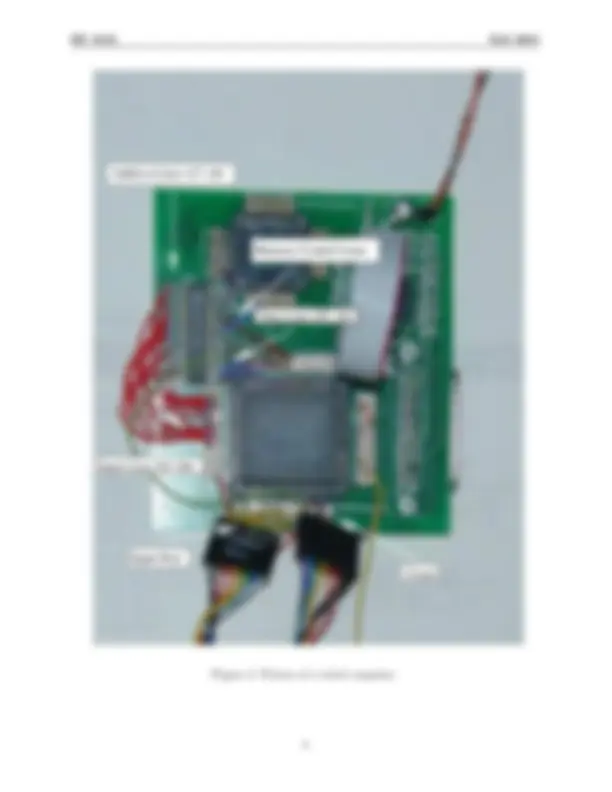
EE 231L Fall 2005
EE 231L Lab 5
Building the Computer
Now that you have designed and simulated your computer, it is time to build and test it. You
will build the computer on a printed circuit board which has a socket for an Altera EPF8636ALC84
PLD and a Cypress CY7C128 memory chip. The EPF8636 in programmed in the circuit — you will
not remove the chip and program it at the programming station. (The program in the EPF8636
is stored in volatile memory, so the program is lost when power is removed.) The printed circuit
board has the hardware needed to program the EPF8636 through the parallel port on your lab
computer. Figure 1 shows a diagram of the printed circuit board.
Figure 2 shows the first page of the data sheet for the memory chip you will use. Note that the
memory chip has eleven address lines, while your design has only eight address lines. You should
connect the three unused address lines (A10, A9, and A8) to VCC or ground. You then need to
connect the eight address lines used by the computer (A7-A0), the eight data lines (called I/O 7-0
on the data sheet) and the three control lines — chip select (called CE on the data sheet), output
enable, and write (called WE on the data sheet). (VCC and GND are already connected on the
printed circuit board.)
It will be useful to assign pins on your EPF8636 in order to make the computer easier to build.
Figure 3 shows the computer I built. I assigned Pin 43 to be the Output Enable line, Pin 44 to be
the Write Enable line, Pin 46 to be Data 7, etc. I assigned the pins so that it would be convenient
to wire the EPF8636 to the memory chip. I also assigned pins of the input port so they would be
together, and I could connect the eight input lines to the source of the inputs. To assign pins in
Max+Plus II, you go to the Assign menu, the Pin/Location/Chip sub-menu, and make the pin
assignments there.
When you wire your computer, some of the pins on the EPF8636 are labeled V, G and P. The
pins labeled V have been connected to +5V. Those labeled G have been connected to ground. Those
labeled P are used for programming the EPF8636. Do not connect anything to the pins labeled P.
You can use the pins labeled V or G to connect to the unused address lines of the memory chip.
You should also connect a G pin on the printed circuit board to the ground on your breadboard.
(You will use your breadboard to supply the clock for the computer, and input data.)
1












